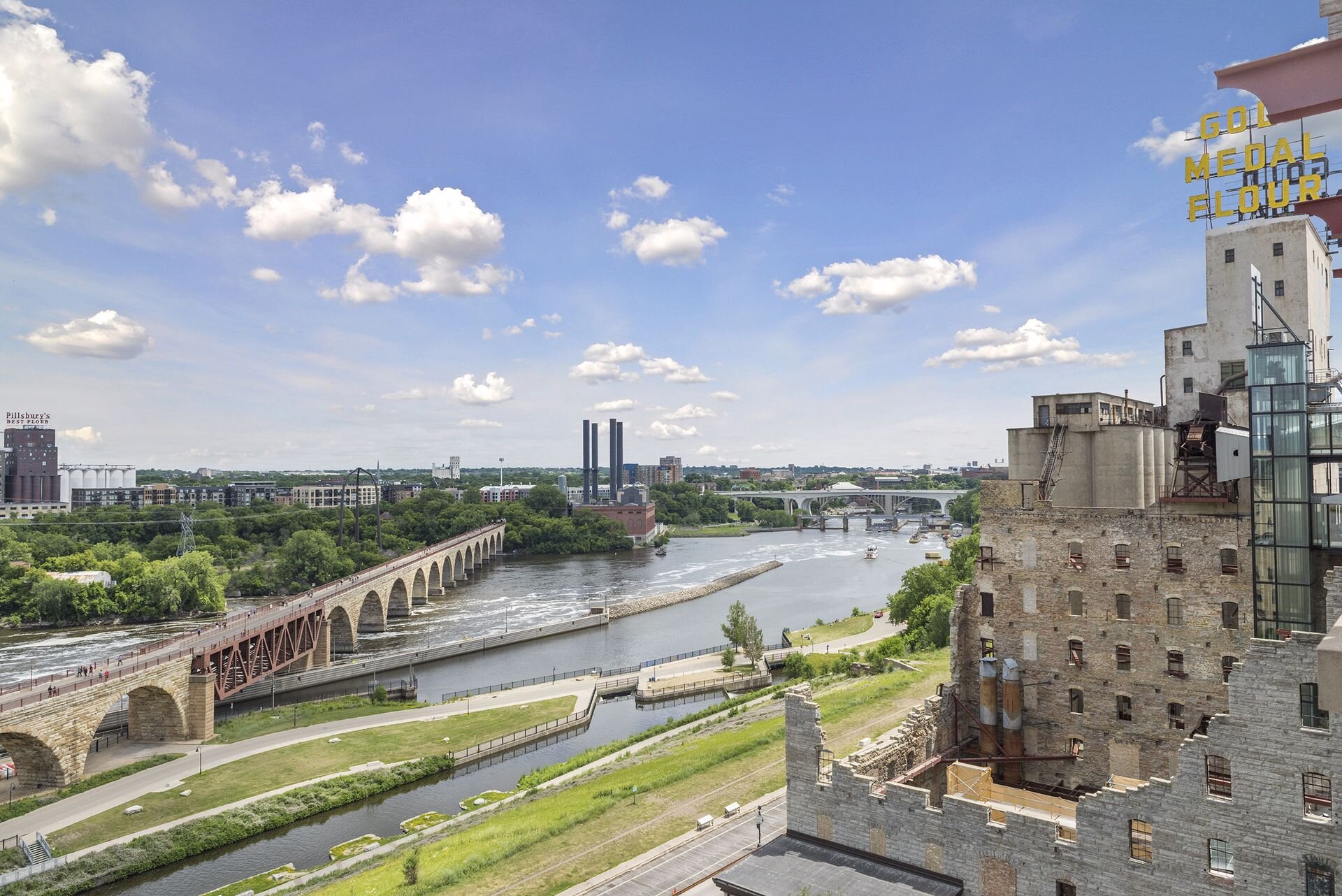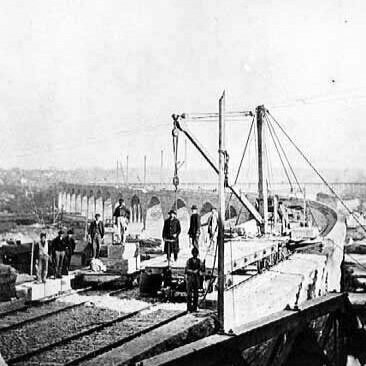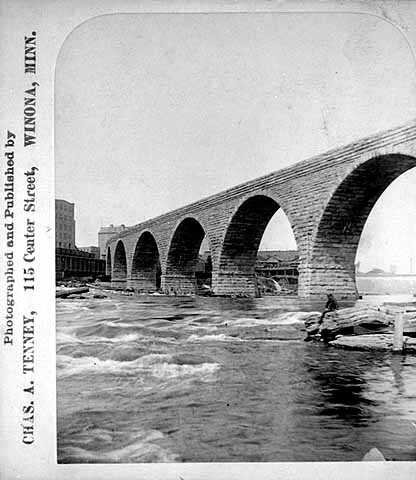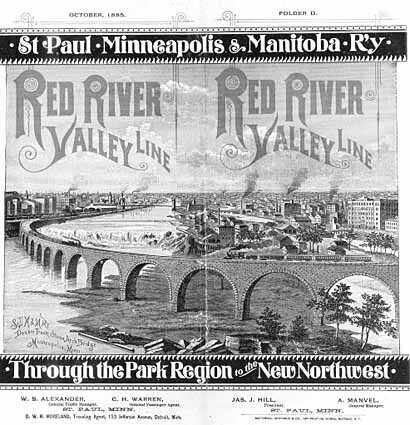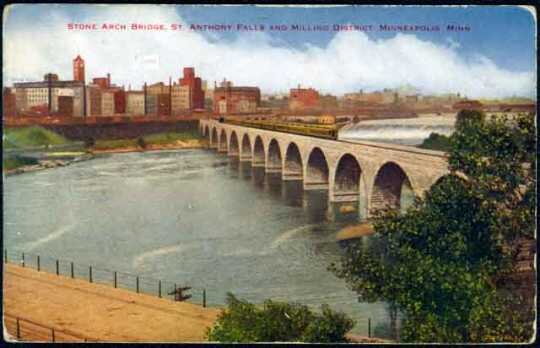Historical Spotlight: Stone Arch Bridge
“[The Stone Arch Bridge] will produce an impression upon every stranger that comes this way that cannot be other than favorable, and one that will make him unconsciously an advocate of Minneapolis.”
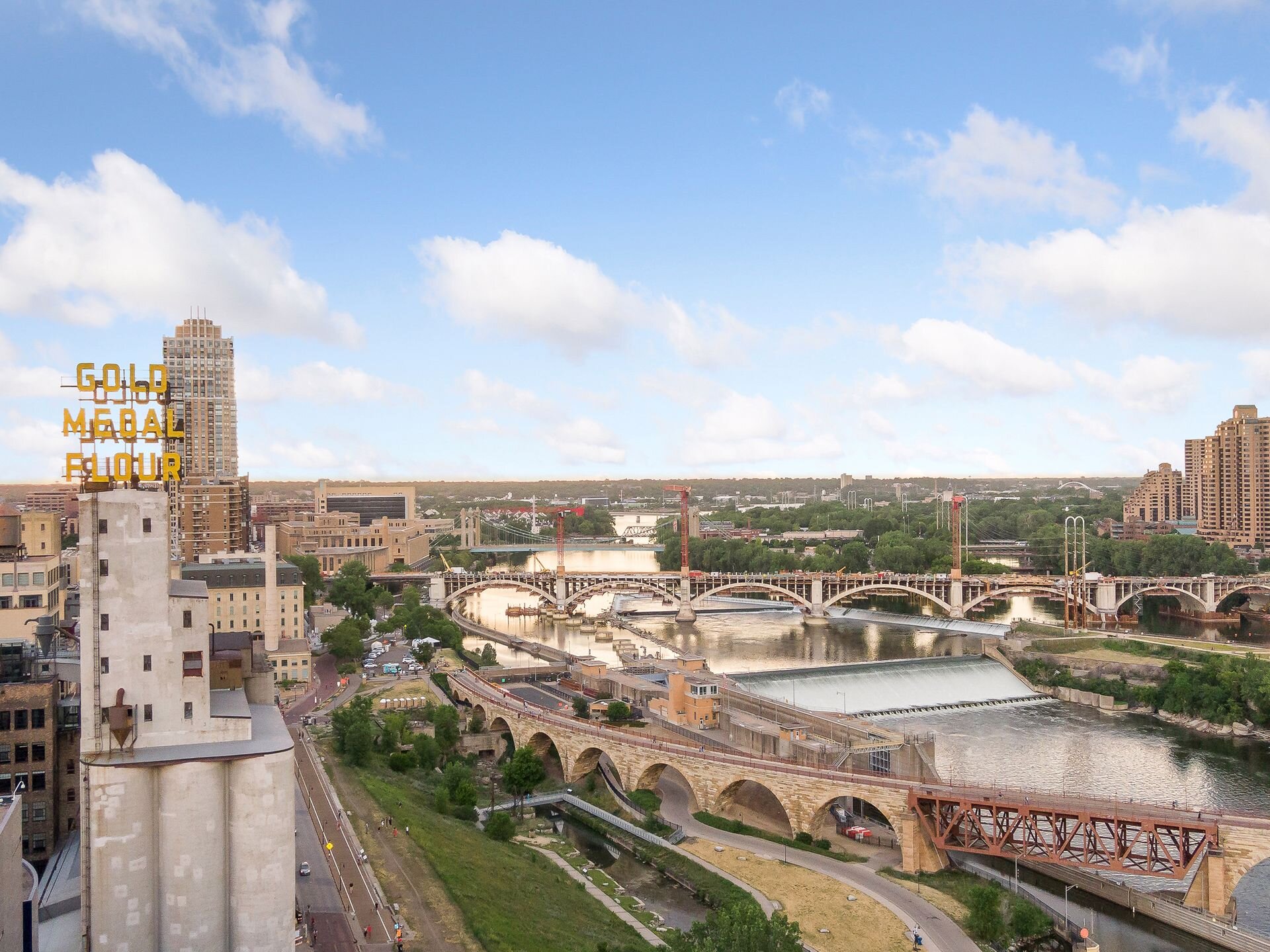
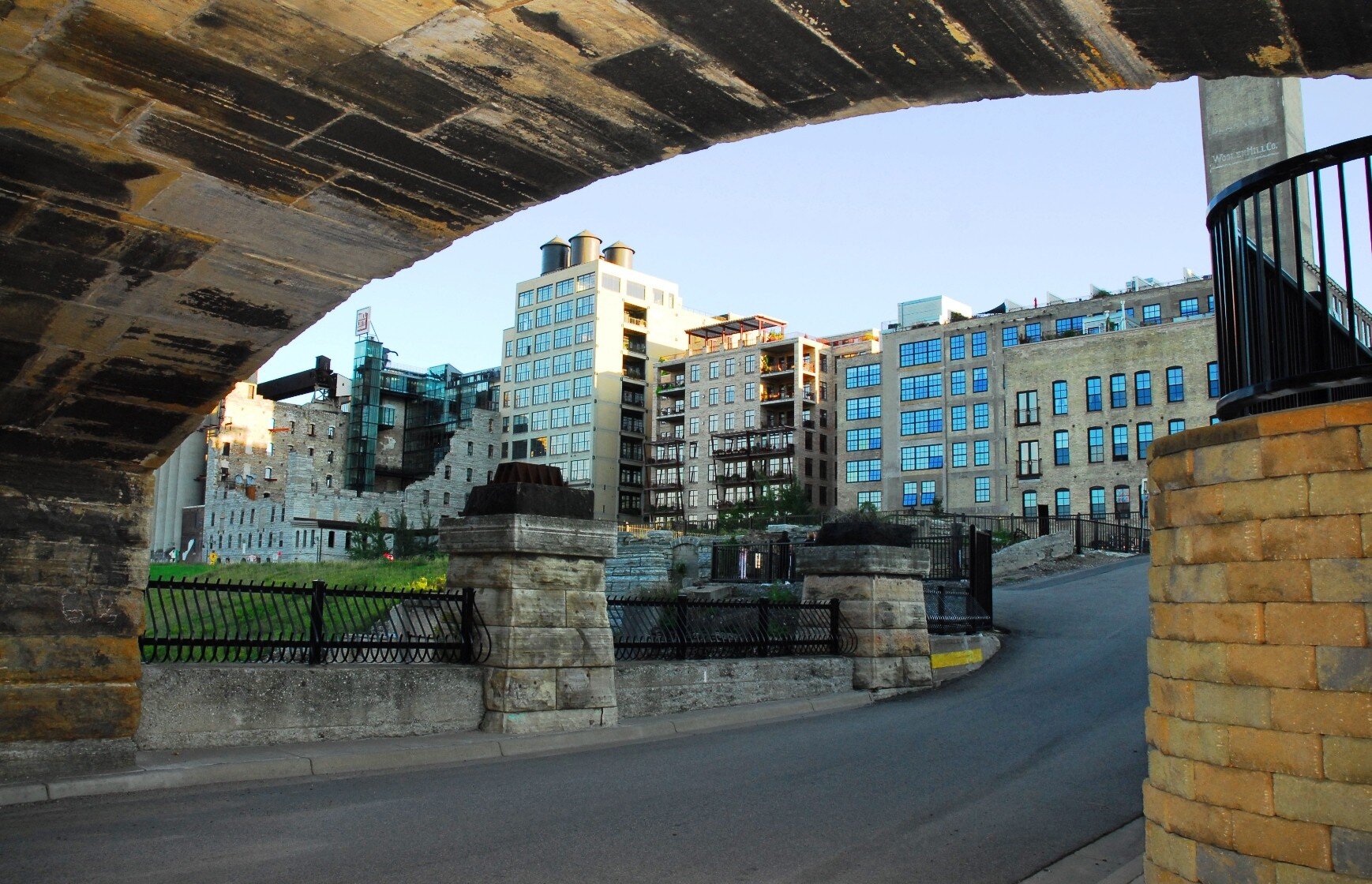
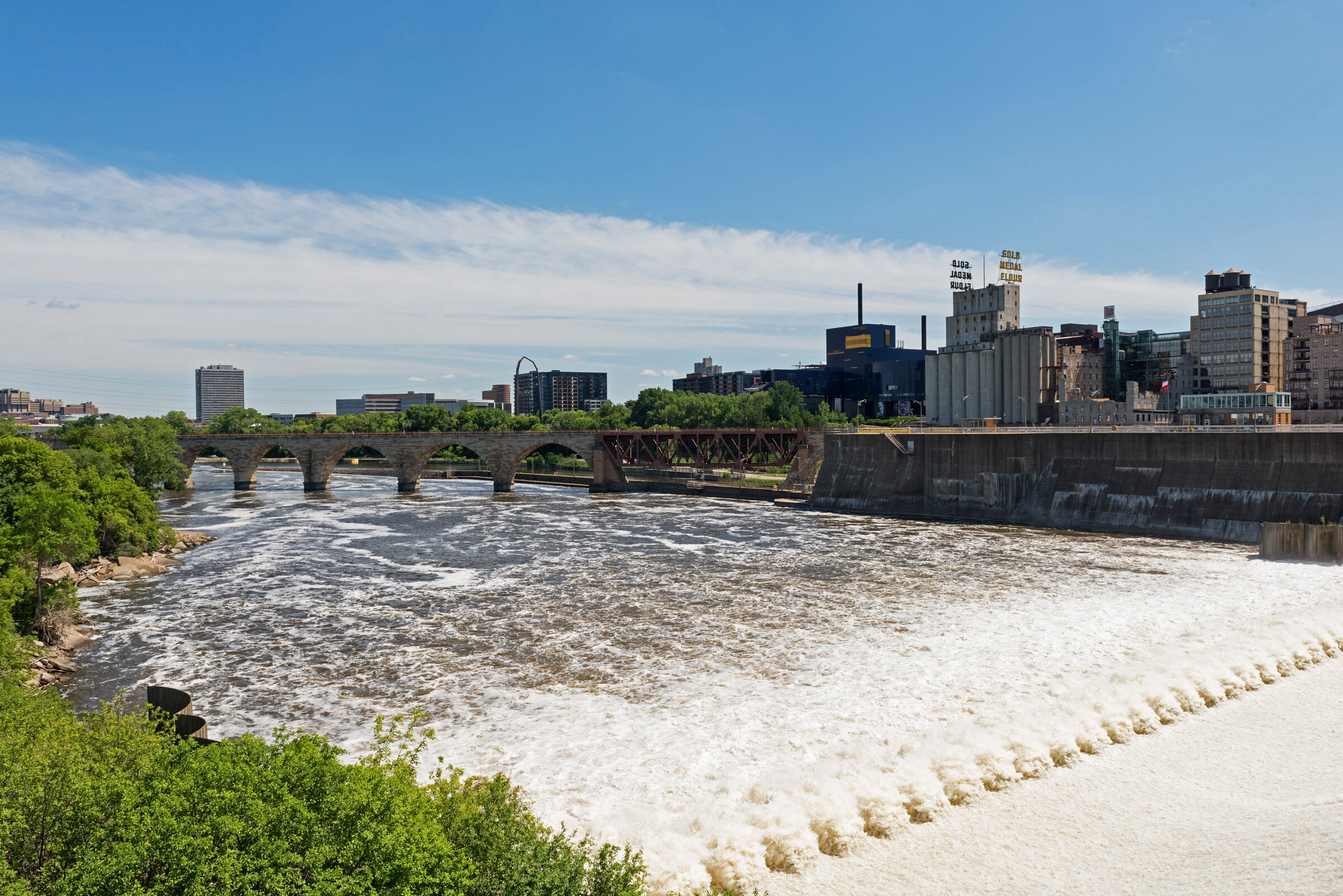


HISTORY
The railroads initially used a rickety suspension bridges over the Mississippi, a thrillingly dangerous venture. Titans of industry jostled for control over the railroads and their depots, and the cities of Saint Paul, Saint Anthony, and Minneapolis fought for ability to control the trade. It was during this time that some of the most iconic buildings of the cities were built, including the Stone Arch Bridge, which was led and financed by railroad magnate James J. Hill.
At its peak of railroad service the Stone Arch Bridge hosted 82 passenger train cars a year and was a crucial part of the transport that made Minneapolis the largest flour producer in the world. As technology changed and the railroads declined, so did the use of the Stone Arch Bridge- when the Stone Arch Bridge ceased being used as a railroad bridge in 1978 it was only hosting four trains a day.
The Stone Arch Bridge was added to the National Register of Historic Places in 1971. In 1994 it was transformed into a pedestrian bridge, and has been a crucial part of redeveloping the riverfront.
Now the bridge connecting the east and west banks of the Mississippi is a popular destination, with Mill Ruins Park on the West Side and Father Hennepin Park on the east, and is part of the Saint Anthony Falls Heritage Trail.
Minneapolis grew as an industrial town due to its location on the Mississippi river. The river allowed for mills to use the power in order to process first timber, then wheat. Timber and logs floated down river in the same established trade routs that had existed for years, but with the advent of the railroad and new population centers the city needed new access to trade routs to continue its bustling growth.
Construction on the Stone Arch Bridge began on January in 1882. The first railroad crossing of the bridge happened on November 22, 1883. The bridge had an innovative curved design due the need to work around the Saint Anthony Falls and the fragile stone underneath the site. The bridge has twenty-three arches of ranging in size from forty to one hundred feet, and used local building materials such as granite from the Sauk Rapids, marble from Wisconsin, and limestone from the Mississippi River itself. It was designed to be large enough for two trains to pass each other side by side.
FAST FACTS
Captured image or oil on canvas? The spectacular @mikeweltonart paints cityscapes around Minneapolis.
The bridge was originally nicknamed Hill’s Folly - critics were uncertain of its necessity and the choice to build it out of stone, rather than the more conventional iron.
The citizens of Minneapolis presented James J. Hill with a silver tray from Tiffany’s with a custom etching to commemorate the completion of the Stone Arch Bridge. The tray is now part of the Minneapolis Institute of Art collection.
The Stone Arch Bridge is the only arched bridge constructed of stone on the Mississippi, and is the second oldest bridge on the Mississippi.
Stone Arch Bridge is part of the larger Central Mississippi Riverfront Regional Park, a partnership park that’s partially managed by the city, partially by the state, and partially by the National Parks Service.
our favorite activities around
the Stone Arch Bridge
CINDY
Cindy highly recommends taking the park ranger tours to get access under the bridge and discover the wildlife and tunnels that lays beneath.
LYNN
Lynn enjoys getting in a brisk bike ride across the Stone Arch Bridge, or strolling and taking in the views and the history.
SARAH
Sarah likes to bringing out of town visitors to explore the city by biking or walking across the bridge.
ALLYSON
Allyson always drives friends and family visiting Minneapolis on the I-35W Bridge to show off the Stone Arch Bridge and the best view in the city.
GABRIELA
Gabriela’s favorite walking path to take with her active dachshund Pippa is from the North Loop riverfront trail to Boom Island Park by way of the Stone Arch Bridge.
Listings around the Stone Arch Bridge
LINKS TO SUPPORT THE STONE ARCH BRIDGE
Friends of the Falls
Friends of the Falls is envisions a future site that reflects the truthful story of the Central Riverfront as Dakota land, while recognizing the national significance of the St. Anthony Falls Historic District and the Mississippi River.
Minnesota Historical Society
Since 1849, the Minnesota Historical Society has been preserving, sharing, and connecting people to our state's stories, including the Stone Arch Bridge.
Mississippi Park Connection
Mississippi Park Connection ignites discovery and a lifelong relationship with the Mississippi River through youth education, environmental stewardship and community engagement. It aims to serve as a model for operating a national park in an urban area where people are part of the landscape.
Contact us below to view listings near the Stone Arch Bridge, and more!


